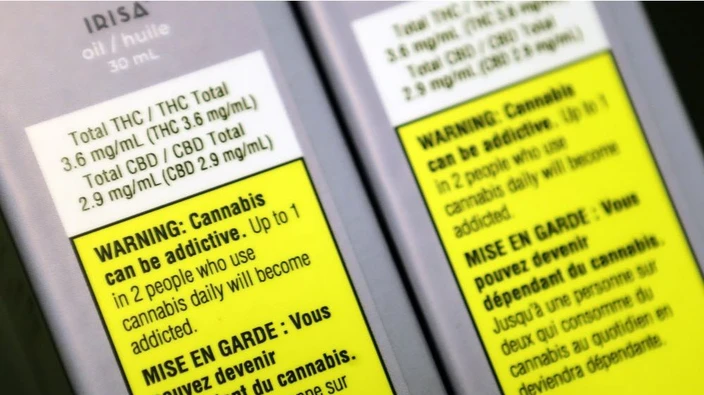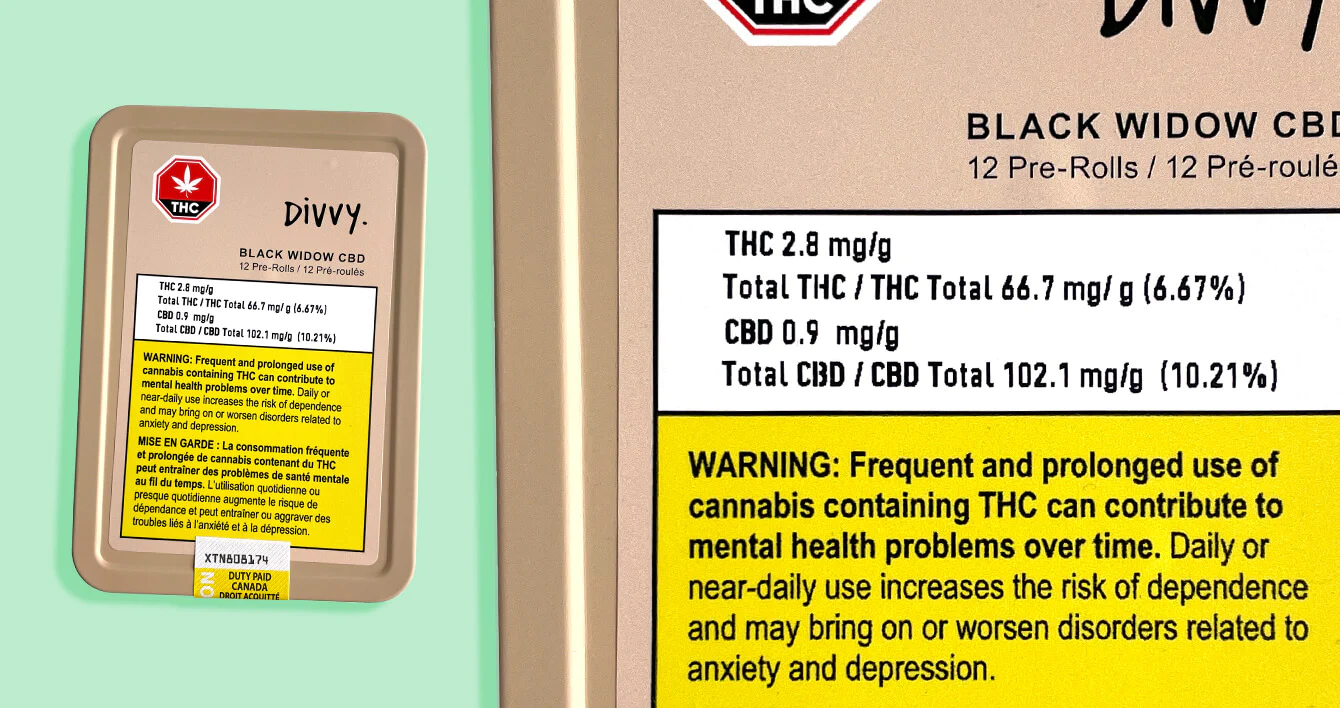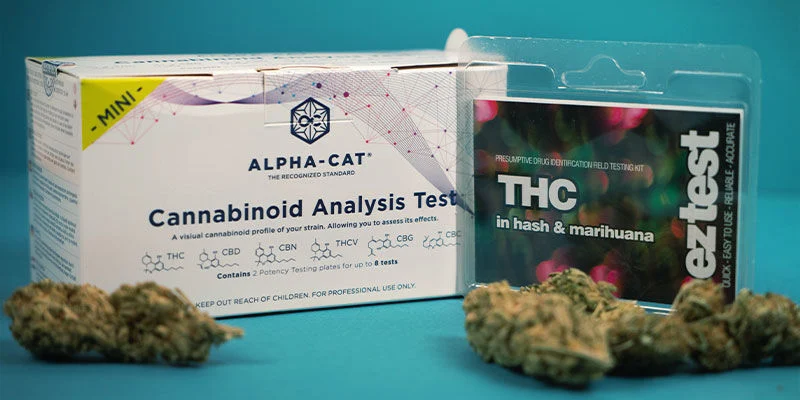In the ever-evolving landscape of the cannabis industry, the accuracy of THC levels in cannabis products holds paramount importance. THC, or tetrahydrocannabinol, is the primary psychoactive compound in cannabis responsible for its euphoric effects.
Consumers rely heavily on THC levels as a key factor in determining the potency and desired effects of the products they purchase. Whether seeking relief from medical conditions or simply looking to unwind, knowing the THC content allows consumers to make informed choices tailored to their needs. However, amidst the burgeoning market, a concerning phenomenon has emerged – THC inflation. This concept refers to the practice of exaggerating THC levels on product labels, leading to inflated expectations among consumers.
The implications of THC inflation are far-reaching, eroding consumer trust, compromising safety, and undermining the integrity of the industry as a whole. Thus, understanding the significance of accurate THC labeling becomes imperative in ensuring transparency, safety, and consumer satisfaction within the Canadian cannabis market.
Understanding THC and CBD
THC (tetrahydrocannabinol) and CBD (cannabidiol) are two of the most prominent cannabinoids found in cannabis plants, each with distinct properties and effects. THC is known for its psychoactive properties, responsible for the euphoric “high” commonly associated with cannabis consumption. On the other hand, CBD is non-psychoactive and is acclaimed for its potential therapeutic benefits, including relief from pain, anxiety, inflammation, and seizures, among others.
The interaction of THC and CBD with the human body occurs through the endocannabinoid system (ECS), a complex network of receptors and neurotransmitters. THC binds primarily to CB1 receptors in the brain and central nervous system, leading to its psychoactive effects. CBD, meanwhile, interacts with various receptors in the ECS, modulating neurotransmitter release and exerting a range of effects without producing intoxication.

Accurate labeling of THC and CBD content is crucial for several reasons. Firstly, it enables consumers to make informed decisions about the products they consume, ensuring they achieve their desired effects and avoid unwanted outcomes. For medical cannabis users, accurate CBD labeling is especially important as it allows for precise dosing and consistent treatment. Secondly, accurate labeling promotes transparency and accountability within the industry, fostering trust between producers and consumers. Finally, in regions with legal cannabis markets like Canada, precise labeling is essential for regulatory compliance and quality control, safeguarding public health and safety. As such, ensuring the accuracy of THC and CBD labeling is imperative for the integrity and credibility of the cannabis industry.
The Significance of Accurate THC Levels
Accurate THC labeling holds immense significance for both consumers and the cannabis industry at large. Consumers heavily rely on THC levels as a critical factor in their purchasing decisions, serving as a guide to predict the potency and effects of the cannabis products they choose. Whether seeking relief from medical symptoms or recreational enjoyment, knowing the precise THC content allows consumers to tailor their experience to their specific needs and preferences.
The impact of THC levels extends beyond mere potency, influencing dosage and desired effects as well. Higher THC concentrations typically necessitate lower dosages to achieve the desired effects, while lower THC levels may require larger doses, affecting both the efficacy and cost-effectiveness of cannabis use. Moreover, accurate THC labeling ensures consumers can manage their consumption responsibly, minimizing the risk of adverse effects such as anxiety or impairment.

Inaccurate THC labeling not only compromises consumer satisfaction and safety but also carries legal ramifications within regulated cannabis markets like Canada. Misleading or exaggerated THC claims can deceive consumers, leading to potentially harmful outcomes and eroding trust in the industry. From a legal standpoint, inaccurate THC labeling may violate regulations governing cannabis products, exposing producers to fines, penalties, or even license revocation. Moreover, it undermines the efforts of regulatory bodies to establish standardized testing protocols and labeling requirements aimed at ensuring consumer protection and product consistency. Thus, the significance of accurate THC labeling extends far beyond individual consumer experiences, encompassing both ethical considerations and legal obligations crucial for the integrity and legitimacy of the cannabis industry.
Factors Affecting THC Levels
The variability in THC content among cannabis strains is a well-documented phenomenon in the industry, stemming from the diverse genetic makeup of different cannabis cultivars. Cannabis strains can exhibit significant differences in their cannabinoid profiles, including varying levels of THC. This genetic diversity means that certain strains may naturally contain higher levels of THC, while others may have lower concentrations or different ratios of cannabinoids altogether.
Additionally, environmental factors such as growing conditions and cultivation methods play a pivotal role in determining THC levels. Factors like temperature, humidity, soil composition, and nutrient availability can all influence the plant’s metabolic processes and cannabinoid production. Cultivation methods, including indoor versus outdoor growing, hydroponic systems, and organic versus conventional farming practices, can also impact THC content. Furthermore, the genetic stability and breeding practices employed by cultivators can selectively enhance or diminish THC levels in specific strains over time.
Post-harvest processing and storage also play a crucial role in preserving the THC content of cannabis products. Improper handling, drying, curing, or storage conditions can degrade cannabinoids, including THC, leading to potency loss or variability in the final product. Factors such as exposure to light, air, heat, and moisture can accelerate the degradation of THC and other cannabinoids, compromising the product’s quality and consistency.
Proper drying and curing techniques, along with appropriate packaging and storage methods, are essential for maintaining the potency and integrity of THC levels in cannabis products post-harvest. Overall, understanding and managing these various factors are essential for producers to consistently deliver cannabis products with accurate and reliable THC levels to meet consumer expectations and regulatory requirements.
The Problem With THC Inflation
The concept of THC inflation refers to the practice within the cannabis industry of overstating or exaggerating the THC levels present in products, leading to inflated perceptions of potency among consumers. This phenomenon is particularly prevalent in regions where high-THC products are in high demand, such as the Canadian cannabis market. Several factors contribute to THC inflation, including marketing tactics employed by producers and retailers aiming to capitalize on consumer preferences for potent products.
In response to growing consumer demand for high-THC strains, producers may prioritize breeding and cultivation practices that yield higher THC concentrations, sometimes at the expense of other desirable traits or cannabinoid profiles. Additionally, the lack of standardized testing protocols and inconsistent regulatory oversight can create opportunities for producers to manipulate THC data to enhance market competitiveness or command higher prices for their products.

The consequences of inflated THC levels extend beyond mere economic considerations, posing significant risks to consumer trust and safety within the industry. Misleading or exaggerated THC claims can lead consumers to overestimate the potency of products, potentially resulting in adverse effects such as anxiety, paranoia, or impairment, especially among novice users or those with lower tolerances.
Moreover, reliance on inaccurate THC labeling undermines consumer confidence in the legitimacy and transparency of the cannabis industry as a whole. Inflated THC levels erode trust between producers and consumers, fostering skepticism and disillusionment with product claims and marketing practices. Furthermore, from a regulatory standpoint, inaccurate THC labeling may contravene legal requirements and standards established to protect public health and safety, potentially exposing producers to legal liability or regulatory enforcement actions. Thus, addressing the problem of THC inflation is essential for safeguarding consumer well-being and fostering integrity and accountability within the cannabis industry.
Regulatory Framework and Labeling Standards
In Canada, the regulation of cannabis, including THC labeling, is governed by the Cannabis Act and its accompanying regulations, such as the Cannabis Regulations. These regulations mandate strict requirements for the labeling of cannabis products to ensure transparency, consumer safety, and regulatory compliance. Under these regulations, all cannabis products must undergo comprehensive testing by licensed laboratories to determine their THC and CBD content accurately. This testing must adhere to standardized methods approved by Health Canada to ensure consistency and reliability across the industry.
Accurate THC testing and reporting are essential components of the regulatory framework. Producers are required to conduct rigorous testing of their cannabis products at various stages of production, from cultivation to processing, to verify the potency and cannabinoid content accurately. Test results must be accurately recorded and reported on product labels, including the precise THC concentration expressed in milligrams per gram (mg/g) or percentage (%). Additionally, producers must provide detailed information on the testing methodology used, including the type of sample tested, the analytical technique employed, and the qualifications of the testing laboratory.
To enforce compliance with THC labeling standards, Health Canada employs a combination of regulatory oversight and enforcement measures. Licensed producers are subject to regular inspections and audits to ensure they meet the stringent requirements set forth in the Cannabis Act and Regulations. Health Canada also conducts random product testing to verify the accuracy of THC labeling claims and identify any discrepancies or violations.
In cases where non-compliance is identified, enforcement actions may include warnings, fines, license suspensions, or revocations, depending on the severity of the violation. These enforcement measures are designed to uphold the integrity of the regulated cannabis market, protect consumer interests, and maintain public health and safety standards. Overall, the regulatory framework governing THC labeling in Canada plays a crucial role in ensuring the accuracy and reliability of cannabis products available to consumers.
Challenges in THC Testing and Analysis
Despite advancements in cannabis testing technology, current THC testing methods are not without their limitations. One significant challenge lies in the complexity of cannabis matrices, which can contain various compounds that may interfere with the accurate quantification of THC. Matrix effects, such as the presence of pigments, lipids, and other cannabinoids, can impact the sensitivity and specificity of analytical techniques, leading to potential inaccuracies in THC measurements. Additionally, the heterogeneity of cannabis samples, including variations in moisture content, texture, and density, presents challenges for standardized sample preparation and homogenization, further complicating the analytical process.
Various factors can affect the accuracy of THC testing results, including sample preparation techniques, analytical instrumentation, and operator proficiency. Inadequate sample homogenization or extraction methods can lead to uneven distribution of cannabinoids, resulting in inconsistent THC measurements within the same sample. Analytical instrumentation, such as gas chromatography (GC) and high-performance liquid chromatography (HPLC), may exhibit differences in sensitivity, resolution, and selectivity, affecting the precision and reliability of THC quantification. Moreover, variations in laboratory practices, calibration standards, and quality control procedures can introduce variability and bias into THC testing results, undermining their accuracy and reproducibility.
In response to these challenges, ongoing efforts are underway to improve THC testing technology and standards. Research initiatives focus on developing novel analytical methods and techniques that offer enhanced sensitivity, specificity, and reliability for THC quantification. This includes the exploration of alternative analytical platforms, such as mass spectrometry (MS) and near-infrared spectroscopy (NIRS), as well as the refinement of sample preparation protocols to improve extraction efficiency and minimize matrix effects. Standardization and harmonization efforts seek to establish consensus guidelines and protocols for THC testing, ensuring uniformity and comparability across laboratories and jurisdictions.
Additionally, investment in training and education programs aims to enhance the proficiency and competency of laboratory personnel, fostering a culture of quality assurance and continuous improvement in THC testing practices. Overall, these ongoing efforts hold promise for advancing the state-of-the-art in THC testing and analysis, ultimately enhancing the accuracy and reliability of cannabis products available to consumers.
Consumer Awareness and Education
Consumer awareness and education play a crucial role in ensuring informed decision-making and promoting responsible cannabis consumption. Educating consumers about THC levels and the importance of accuracy in labeling is paramount to empower them with the knowledge needed to navigate the cannabis market effectively. By understanding the significance of THC levels in determining potency, dosage, and desired effects, consumers can make informed choices that align with their preferences and tolerance levels, while minimizing the risk of adverse experiences or overconsumption. Moreover, awareness of the potential consequences of inaccurate THC labeling, such as misleading potency claims or safety concerns, helps consumers advocate for transparency and accountability within the industry.

To ensure they are purchasing products with reliable THC labeling, consumers can employ several strategies. Firstly, they should prioritize products from licensed producers and retailers operating within regulated cannabis markets, such as Canada, where stringent quality control and labeling standards are enforced. Additionally, consumers should look for products that have undergone third-party testing by accredited laboratories to verify their THC content and ensure compliance with regulatory requirements. Reading product labels and packaging carefully for detailed information on THC potency, testing methodology, and batch-specific test results can also help consumers make informed choices and assess the reliability of THC labeling claims.
Dispensaries and retailers play a pivotal role in providing transparent information to consumers and promoting responsible cannabis use. By educating their staff about cannabis products, including THC potency, effects, and dosing recommendations, dispensaries can empower customers with accurate and relevant information to guide their purchasing decisions. Transparent labeling and packaging practices, such as providing detailed cannabinoid profiles and batch-specific test results, help build trust and confidence among consumers.
Furthermore, proactive communication and engagement with customers, including addressing questions or concerns about THC levels and product potency, demonstrate a commitment to consumer safety and satisfaction. Ultimately, through collaborative efforts between consumers, dispensaries, and retailers, greater awareness and education about THC levels and accuracy contribute to a safer and more transparent cannabis marketplace.
Industry Perspectives and Solutions
Cannabis producers and manufacturers acknowledge the importance of accurate THC labeling as a cornerstone of consumer trust and product integrity. Many recognize that overstating THC levels, whether intentionally or inadvertently, undermines the credibility of the industry and compromises consumer safety. From their perspective, ensuring accurate THC labeling requires a commitment to rigorous testing protocols, transparency in reporting methodologies, and adherence to regulatory standards. Producers and manufacturers also emphasize the need for ongoing research and innovation to enhance testing technologies and methodologies, thereby improving the accuracy and reliability of THC measurements.
To address the issue of THC inflation and improve accuracy in labeling, industry stakeholders are exploring various strategies and solutions. One approach involves implementing standardized testing protocols and quality assurance measures across the supply chain to ensure consistency and reliability in THC quantification. This includes investing in state-of-the-art analytical instrumentation, training personnel in best practices for sample preparation and analysis, and establishing robust quality control procedures to verify the accuracy of test results. Additionally, industry associations and advocacy groups are promoting transparency and accountability through initiatives such as voluntary certification programs, where producers commit to rigorous testing and labeling practices to earn consumer trust and confidence.
Collaboration between industry stakeholders and regulators is essential to enhance transparency and promote accountability in THC labeling. By working together, producers, manufacturers, retailers, and regulatory agencies can develop comprehensive guidelines and standards for THC testing and labeling that reflect the latest scientific advancements and best practices. This collaborative approach fosters mutual understanding and cooperation, ensuring that regulatory requirements are practical, enforceable, and aligned with industry realities.
Moreover, ongoing dialogue and engagement between industry representatives and regulators facilitate the exchange of knowledge and expertise, enabling continuous improvement and adaptation to evolving challenges and opportunities in the cannabis market. Ultimately, by fostering a culture of collaboration and shared responsibility, industry stakeholders and regulators can enhance transparency and integrity in THC labeling, benefiting consumers, producers, and the broader cannabis community alike.
Accurate THC Labeling: WHer We Go From Here
The importance of accurate THC labeling cannot be overstated, both for consumers seeking reliable products and for the integrity of the cannabis industry as a whole. Accurate THC labeling is essential for consumers to make informed decisions about potency, dosage, and effects, ensuring their safety and satisfaction. Moreover, it fosters trust and confidence in the industry, promoting transparency and accountability among producers, manufacturers, and retailers.
As stakeholders in the cannabis market, it is imperative that we prioritize transparency and reliability in THC labeling, committing to rigorous testing standards, transparent reporting practices, and collaboration with regulators to uphold consumer trust and safety. By working together to establish and enforce robust regulatory frameworks and quality assurance measures, we can ensure that consumers have access to accurately labeled cannabis products that meet their needs and expectations.
Looking ahead, the future of THC testing and regulation holds promise for advancements in technology, standardization, and education. Continued investment in research and innovation, coupled with ongoing dialogue and cooperation between industry stakeholders and regulators, will drive progress towards greater accuracy, consistency, and transparency in THC labeling. Through these collective efforts, we can build a cannabis industry that prioritizes consumer welfare, fosters trust, and contributes to the responsible and sustainable growth of the market.
